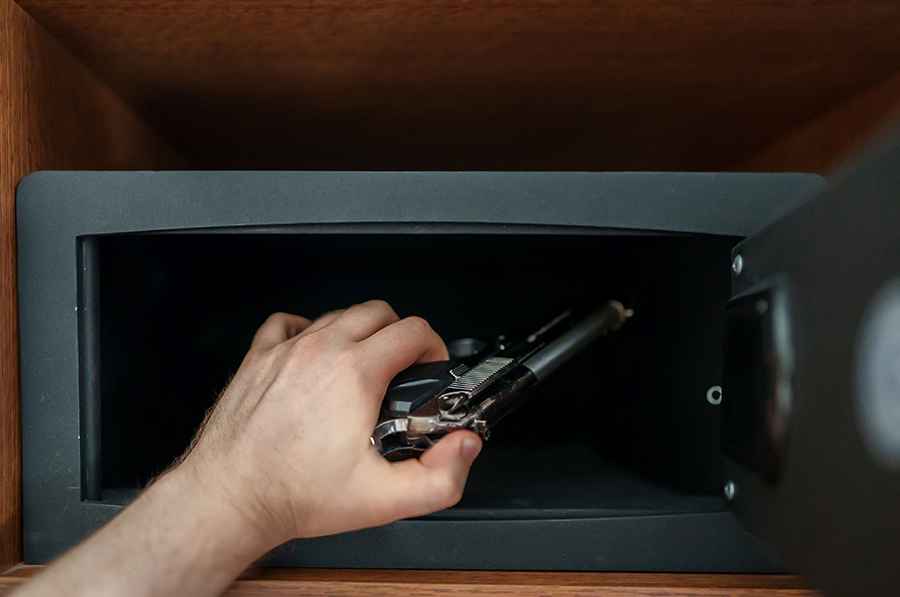5 Firearm Safety Rules For Safe Road Trips
When planning a road trip, especially one that involves carrying a firearm, it’s essential to understand and follow specific safety guidelines. Transporting firearms in a vehicle adds an extra layer of responsibility, and adhering to safety rules is crucial for ensuring the well-being of everyone involved.

Whether it’s a long cross-country journey or a short drive to a nearby destination, these rules apply to anyone traveling with a firearm. The primary focus is always on preventing accidents, unauthorized access, and legal issues.
Understand the Legal Requirements for Transporting Firearms
Before embarking on a road trip, it’s important to be familiar with federal, state, and local laws regarding firearm transportation. Different states have different regulations, and crossing state lines without proper knowledge could lead to legal complications. For instance, some states have strict rules about how firearms should be stored in a vehicle, whether or not they need to be unloaded, and where the ammunition must be kept. Ensuring that the firearm complies with all local and federal laws is the first step to a safe trip.
In some situations, gun owners choose to utilize a gun wall mount for home storage, but for road trips, different considerations apply. While a wall mount is ideal for keeping firearms securely displayed at home, secure storage in a vehicle must be considered with equal importance. Proper vehicle storage helps prevent theft and ensures that firearms are not easily accessible to unauthorized persons during transit.
Ensure Proper Storage of Firearms in the Vehicle
When transporting firearms, proper storage is key to ensuring safety. Most states require firearms to be stored in a specific manner within a vehicle. This often includes unloading the firearm, locking it in a secure case, and placing it in an area of the vehicle that is not easily accessible, such as the trunk. This prevents any unauthorized handling and reduces the risk of accidents during travel.
While traveling, always separate the firearm from its ammunition. Keeping the two in separate locations within the vehicle minimizes the chance of a loaded weapon being accidentally discharged. Additionally, it’s recommended to use a lockable case or a gun safe to store the firearm. Locking mechanisms such as cable locks can provide an extra layer of security, ensuring that the firearm cannot be discharged or accessed without the owner’s knowledge.
Keep Firearms Unloaded During Transit
One of the cardinal rules of firearm safety, especially during travel, is to keep the firearm unloaded at all times. An unloaded firearm drastically reduces the chance of accidental discharge, which could lead to severe injuries or even fatalities. Before placing the firearm in the vehicle, double-check that it is unloaded and that the chamber is clear of any ammunition. This should be done with the utmost care to avoid mishaps.
Once the firearm is unloaded, it’s important to make sure it remains in that condition throughout the trip. Even if the vehicle is stopped, and the firearm must be accessed, ensure it remains unloaded unless necessary. Additionally, make sure that all passengers in the vehicle are aware that the firearm is unloaded and stored safely.
Secure Ammunition Separately from the Firearm
Just as it’s important to store the firearm securely, the ammunition should also be stored in a separate location. Storing ammunition away from the firearm ensures that the two cannot be used together during transit. In most states, it is illegal to store loaded firearms in a vehicle, and this regulation should always be adhered to.
Use a designated ammunition box or container to keep the ammunition secure. This container should be locked and placed in an area of the vehicle where it is not easily accessible. The key to safe firearm transport is ensuring that both the firearm and its ammunition are safely secured, separate, and inaccessible during travel.
Always Follow Local Laws When Traveling Across State Lines
One of the complexities of transporting firearms on a road trip is navigating different state laws. Each state has its own set of regulations regarding firearms, and these rules can vary significantly. For example, some states may allow concealed carry permits, while others have restrictions on transporting firearms in a vehicle. It’s vital to research the specific firearm laws for each state that will be traveled through to ensure compliance.
The Firearm Owners’ Protection Act (FOPA) provides some protections for gun owners when transporting firearms across state lines, but certain conditions must be met. Under FOPA, firearms must be unloaded, stored in a locked container, and kept separate from the ammunition. Even with these federal protections, understanding and following the local laws is crucial to avoid legal complications.
Conclusion
Adhering to firearm safety rules during road trips is essential for ensuring a safe and hassle-free journey. Whether the trip is long or short, these principles remain critical for minimizing risks and avoiding legal complications.
Image credit: Depositphotos